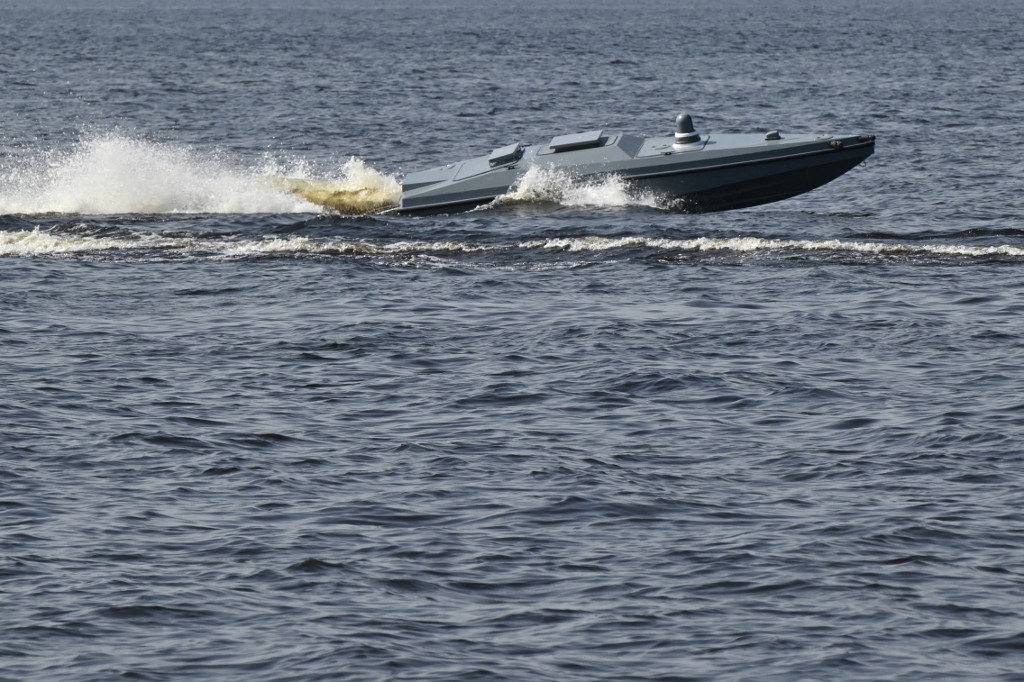The success of loitering munitions and kamikaze drones against armored vehicles during the war in Ukraine took most military commanders, strategists and commentators by surprise, just as the widespread use of improvised explosive devices (IEDs) did in Afghanistan and Iraq.
In particular these mostly improvised weapons have highlighted the vulnerability of the armored vehicles on both sides, which were designed to address the 1980s concept of face-to-face tank battles on the North German plains. The protection provided to former-Soviet, Russian and NATO armored vehicles was optimized for the mainly front on attacks expected in this scenario.
JOIN US ON TELEGRAM
Follow our coverage of the war on the @Kyivpost_official.
An article in the US Breaking Defense on-line military issues magazine has highlighted how what is happening in Ukraine’s war is impacting on those charged with selecting the next generation replacements for the US M1 Abrams main battle tank (MBT) and the M2 Bradley infantry fighting vehicle (IFV).
Brig. Gen. Geoffrey Norman, the head of planning for the US Next-Generation Combat Vehicle and his team, which is based in Eastern Europe, is focusing on what is now seen as the key threat to armored and other vehicles on the modern battlefield. Norman’s team is in contact with the Ukrainian operators of the Abrams and Bradleys, who provide invaluable feedback on all aspects of the performance of the vehicles in real combat situations with first-person view (FPV) drones now being considered as the main threat.

Tons of Sunflower Oil Pollute Major River in Ukraine After Russian Drone Attack
Two decades ago, the NATO military was taken by surprise by the widespread use of IEDs in Iraq and Afghanistan, which attacked the vulnerable bellies and sides of armored vehicles and required urgent solutions. This led to the rapid appearance of Mine-Resistant Ambush Protected (MRAP) vehicles, designed specifically to withstand IED attacks, in most armies of the world. It also created a mindset that 21st-century war was going to be based on low intensity conflicts against irregular forces.
Russia’s full-scale invasion returned us to the reality that the era of conventional warfare was not dead with the expectation, at least on the Kremlin’s side, that armored formations would sweep forward destroying all before them. The fly in the ointment was the appearance of modern attack drones that military commanders have christened “IEDs of the sky.”
All of the armored vehicles, whether from the 1970s or 1990s were all vulnerable to attack from above. It should not have come as that much of a surprise as most of the latest generation of anti-armor guided weapons such as the US Javelin, the UK’s NLAW, Israel’s Spike and Sweden’s RB56 BILL are all top-attack weapons.
Perhaps it was the lack of sophistication of the drones that led to the initial underestimation of the threat. The first FPV drones fielded in Ukraine were based on modified “racer quadcopter drones” costing less than $500, guided via remote control and able to deliver an explosive payload, often a shaped charge warhead or mortar, and crashing it into the target.
Breaking Defense cites a February report by the International Institute for Strategic Studies (IISS) that estimated that Russia had lost almost 9,000 armored vehicles during the first two years of the war.
The need for countermeasures was obvious which led to the led to the appearance of so-called “cope cages” on the tanks, including the Abrams and armored personnel carriers (APC) of both sides aimed at limiting the impact of the weapons. Initially an assortment of crude grills, frames and screens fitted in the field were used, often referred to as BBQ grills – with mixed results:
Russia has reportedly even taken to fitting purpose built anti-drone grills and cages on tank and APC new builds.
Another method of defense has included jamming the control systems being used to guide the FPV drones which, in turn, have led to the development of drones with increased EW resistance.
For Norman and his team, the threat from drones is clear and unlikely to go away. They are looking at what steps need to be taken not only in the short term to provide better immediate protection, but also, more importantly, what impact it will have on the next generation of US and, undoubtedly, all other nations’ armored vehicles.
In the short term they are looking at retrofitting the M2 Bradleys, serving with US forces, with the Israeli Elbit Systems Iron Fist active protection system (APS). This detects an incoming missile or drone and fires a projectile to intercept it mid-flight.
Norman was understandably tight-lipped about the feedback gained from Ukraine and how this would influence future designs, but it seems likely this will include improved top, rear and side protection, hard-kill and soft-kill APS, EW jammers, laser dazzlers, all configured in such a way that its sensors can be modified and upgraded.
Norman said that his team are currently investigating “maturing subsystem” technology demonstrators – with everything on the table, from the size and weight of a future vehicle to the crew numbers and configuration to the powertrain, and so on – but admitted it will likely take “several years” to pull everything together into a full-fledged prototype. The current target date for the new Abrams being the early-2030s.
Breaking Defense reported that the Bradley replacement, currently called the XM30 OMFV (Optionally Manned Fighting Vehicle) program was in the advanced stages of development with designs having also taken into account the lessons learnt from Ukraine.
Norman said: “We are keeping a close watch on what’s happening in Ukraine to make sure that we have those requirements right.”
You can also highlight the text and press Ctrl + Enter






